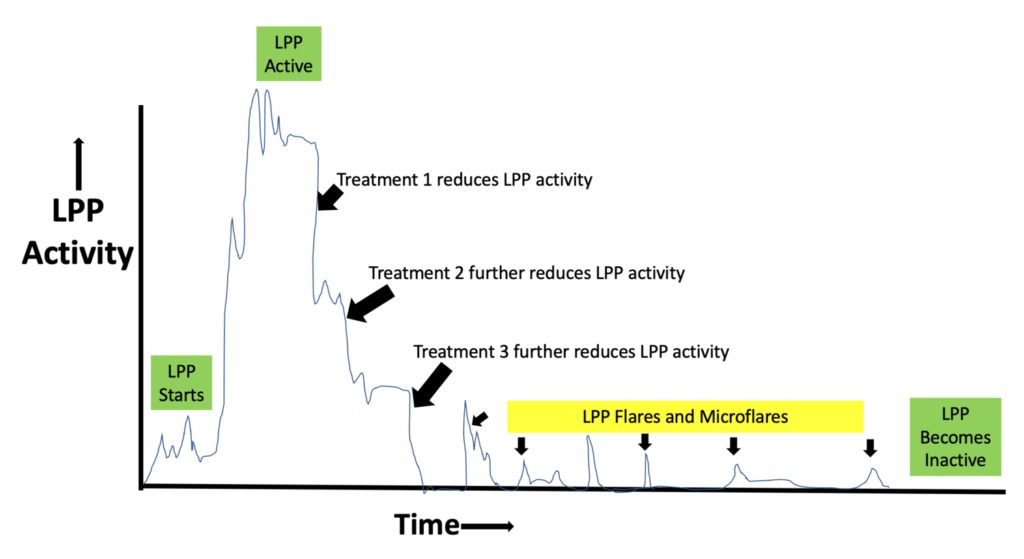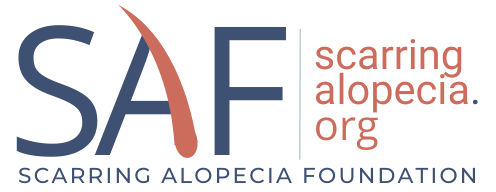A Closer Look at the Typical Course of Treating Lichen Planopilaris
Lichen planopilaris is a scarring alopecia. Treatments are largely focused on reducing inflammation in hopes that by doing so the disease can be stopped.
In the present day, there are many aspects of LPP that are difficult to predict. We know to some degree which treatments are better than others. We know the proportion of patients that are expected to benefit from a certain type of treatment and the proportion of patients who are not expected to benefit. However, we do not know if a given patient will require several trials of medications before finding one that ‘works’ to suppress the disease and whether a given patient will need 1, 2 3 or more treatments to suppress the disease completely (and therefore stop it). In addition, we do not know how long the patient will need to use their treatments before the disease completely stops. It ranges from a year or two to many decades.

When all goes well, LPP disease activity eventually settles down with use of one or more medications. Disease flares and micro flares can still happen even when patents are on the right treatment plan. Some patients, but not all, finally enter a state where their disease is completely quiet. When the disease stays quiet and mediations can be stopped, we call the condition “burnt out.”
Flares and MIcroflares in LPP
Even when a patient’s disease achieves a fairly inactive state, flares and microflares may still happen from time to time. These refer to sudden increases in the activity of the disease. Patients who are experiencing flares may become more itchy, or notice more daily hair shedding. Stress, heat, can humidity can cause such microflares and sometimes these sorts of flares occur for no apparent reason at all.Some patients, but not all, finally enter a state where their disease is completely quiet. When the disease stays quiet and mediations can be stopped, we call the condition “burnt out.”
Although no patient is really ‘typical’ when it comes to LPP, a standard treatment protocol is summarized in this graph above.
Article orginally posted at donovanmedical.com
For more information about cicatricial alopecia, visit carfintl.org
